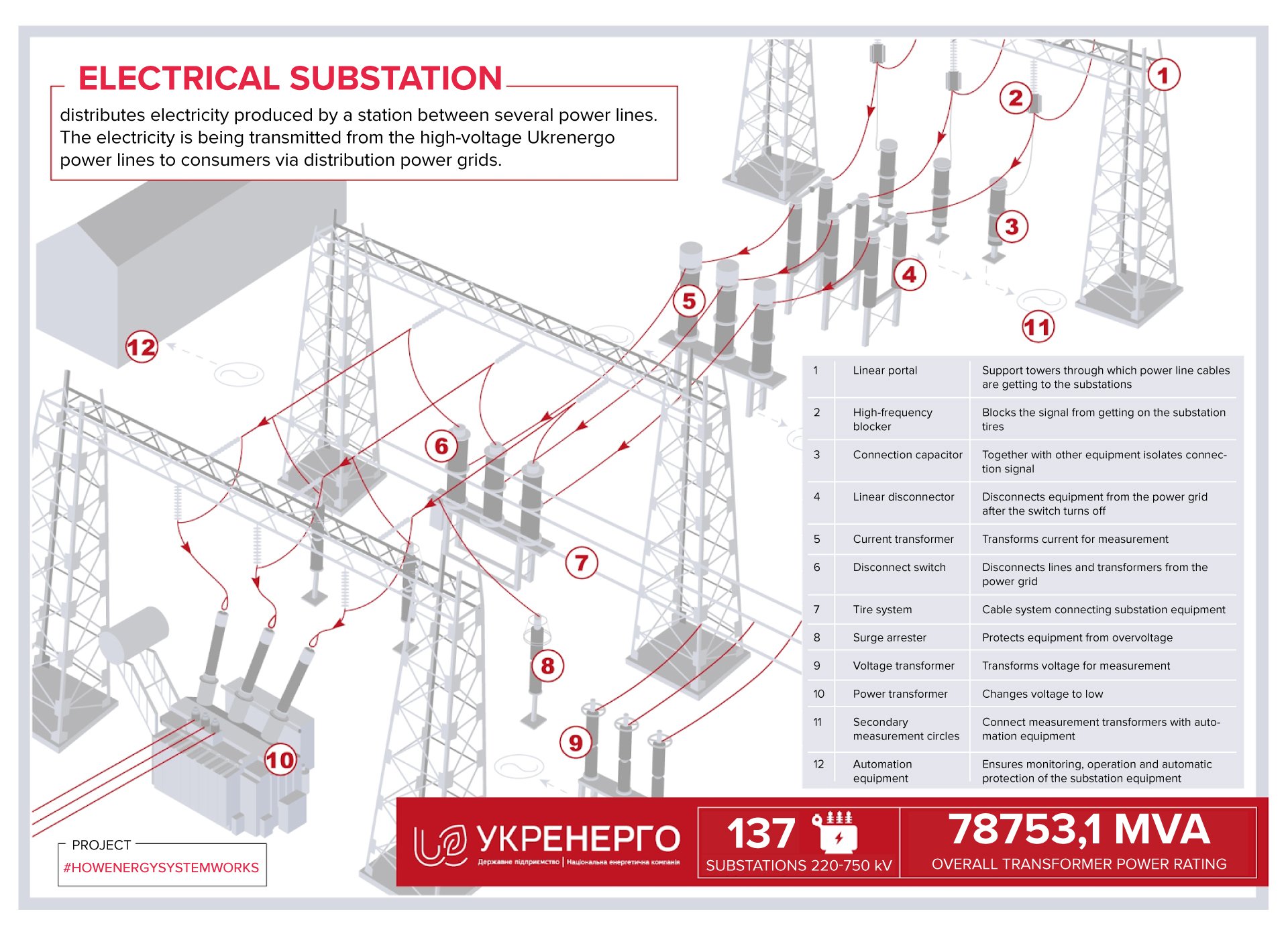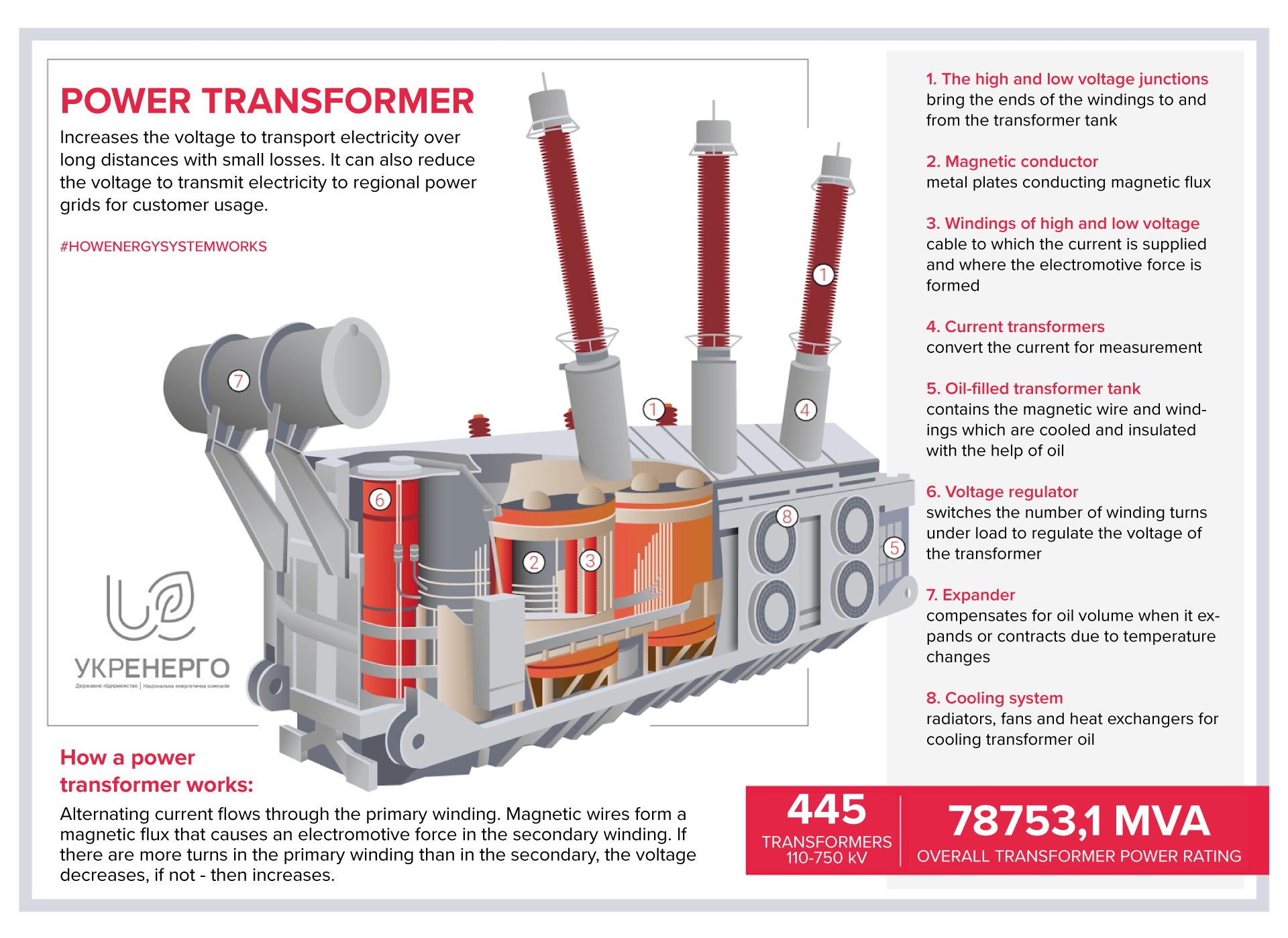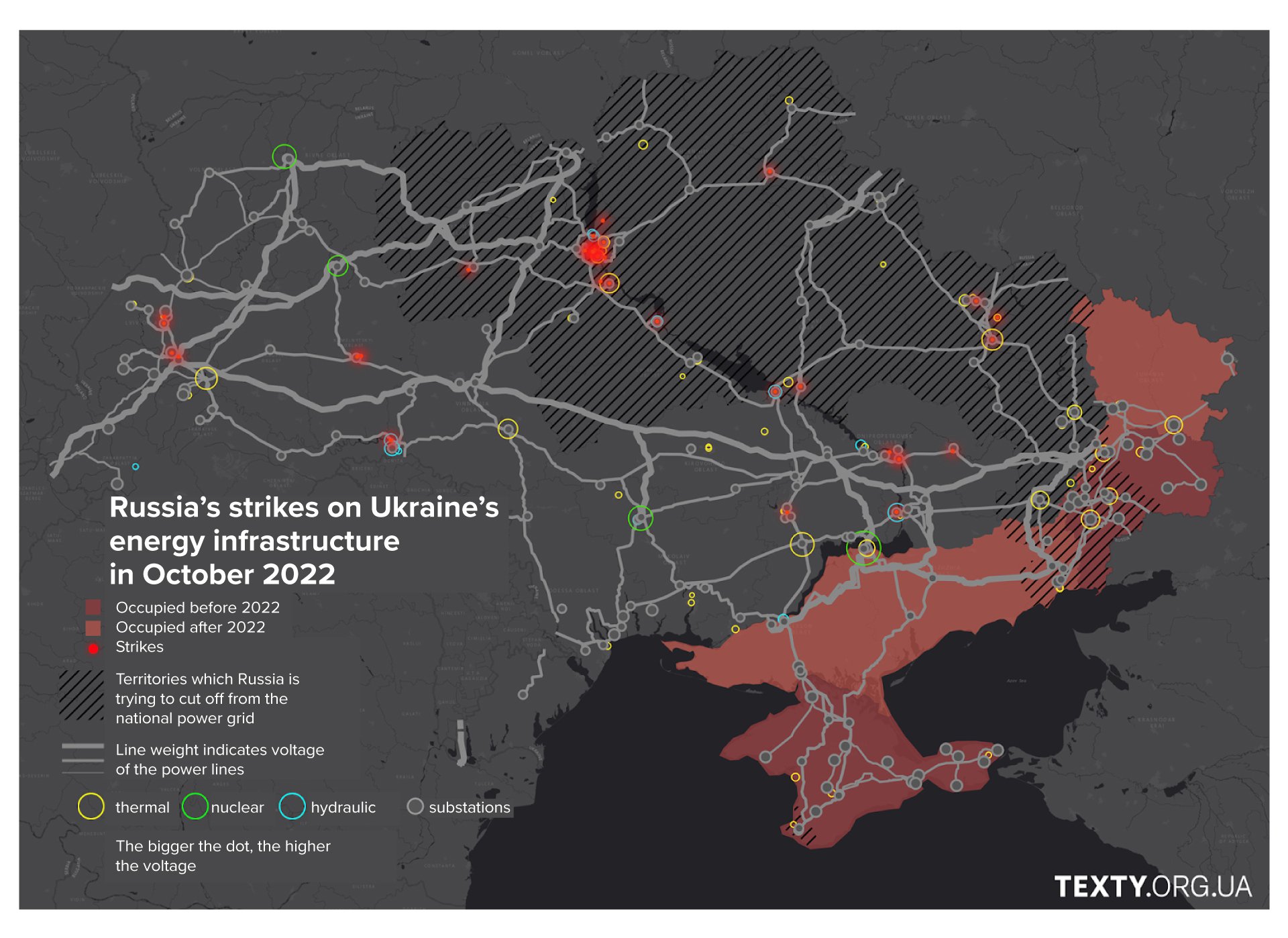What’s up with the power? How Russia destroys energy infrastructure
Russia is systematically shelling electrical substations throughout Ukraine. We tried to analyze where Russian missiles are most often aimed at and what targets they choose.
Earlier, we wrote about how Russian propagandists rejoice in response to attacks on Ukrainian power grids. We tried to investigate in more detail where the Russian forces were directing their strikes and saw how they are trying to isolate Ukraine's power grid and divide it into separate pieces. Notably, a lot of effort is being made to cut off electricity from the north of the country (Kyiv and Kharkiv).
Translated by Dmitry Lytov & Mike Lytov
Read this article in Ukrainian
What does the power grid consist of?
If you look at it as simply as possible, then the energy system consists of stations that produce electricity, power lines, substations, and consumers. Power lines are cables and poles, they are not too expensive and (relatively) easy to replace. Ukrenergo — Ukraine’s national power company — has been repairing the power lines connecting the Zaporizhzhia nucler power plant with the rest of Ukraine for the last 8 months. In the same way, Ukrainian energy workers are repairing lines in other regions.

Substations are the mediators of the power grid management system. They monitor its condition, reduce voltage and distribute energy between users. The Russians hit the most vulnerable part of the substation — the power transformers. The image below shows such a transformer. Its task is to convert the voltage between two power lines.

Only a few companies in the world produce transformers; they take a long time to make and are expensive. Their destruction by Russian missiles causes serious problems for the Ukrainian power supply. The missiles often hit transformers located directly on the territory of the (thermal) power plant. While the station remains intact, it can no longer transmit energy to the network and has to be stopped. Transformers are located under the open sky rather than closed inside the building; they also contain a lot of flammable materials. This means that they are a convenient target for Russian attacks.
Strikes in the north
Ukrenergo, the operator of the Ukrainian energy grid, publishes daily summaries of planned and emergency power outages in the country. During November, disconnections were most often announced in Kyiv, as well as in the regions of Kyiv, Chernihiv, Cherkasy, Zhytomyr, Sumy, Kharkiv, Poltava, and Donetsk. We have shaded this area on the map with diagonal lines.
The gray lines on the map below are high-voltage power lines. They transfer electricity over a long distance between the stations that produce it (especially nuclear ones) and consumers. The gray dots are transformer substations that transfer power from high-voltage lines to lower-voltage lines. This happens in several stages, until end users get 220 V voltage to their homes (in industrial buildings, it can be more). Why keep lines with different voltages in the same network? The short answer is that the higher the voltage, the easier it is to transfer current over a long distance with little loss. While for household use, a lower voltage is required.

If you pay attention to the shaded area, you can see that Russia launched missile strikes on transformers located at power plants in Kyiv, Kharkiv, Vyshgorod, Ukrainka, Svitlovodsk, as well as on those "in the field". Most of the strikes that we were able to identify from media reports occurred specifically in the vulnerable northern region (although quite a few also occurred outside of it). Why are the Russians attacking northern Ukraine?
The map was created on the basis of data from open sources. The data on affected properties is taken from media reports, so this data is not complete. Judging by the type of objects the Russian military are targeting, they are consulted by qualified energy specialists who are familiar with the structure of the Ukrainian energy grid, its strengths and its weaknesses.
We can only guess. Among the possible reasons is the fact that the largest cities, the capital of the country, and a large population live there. This region has relatively few of its own power plants. It is also a very large region, and it lies on the border with Russia / Belarus. It cannot be completely covered by air defense, and the approach time of missiles and drones from Russian territory is very short.
We do not know what damage the Russians have already managed to inflict on the power grid and what Ukrainian energy companies managed to fix. But it is unlikely that Russia will stop its attacks, especially during the winter, when electricity consumption increases. And therefore, longer power outages and accidents are possible ahead, the consequences of which will be difficult to eliminate. Large cities can remain without electricity for several days. And in such conditions it will not be easy to live there.
Missile strikes are still going on even now as we publish this article. There are reports about new affected energy facilities throughout the country.

